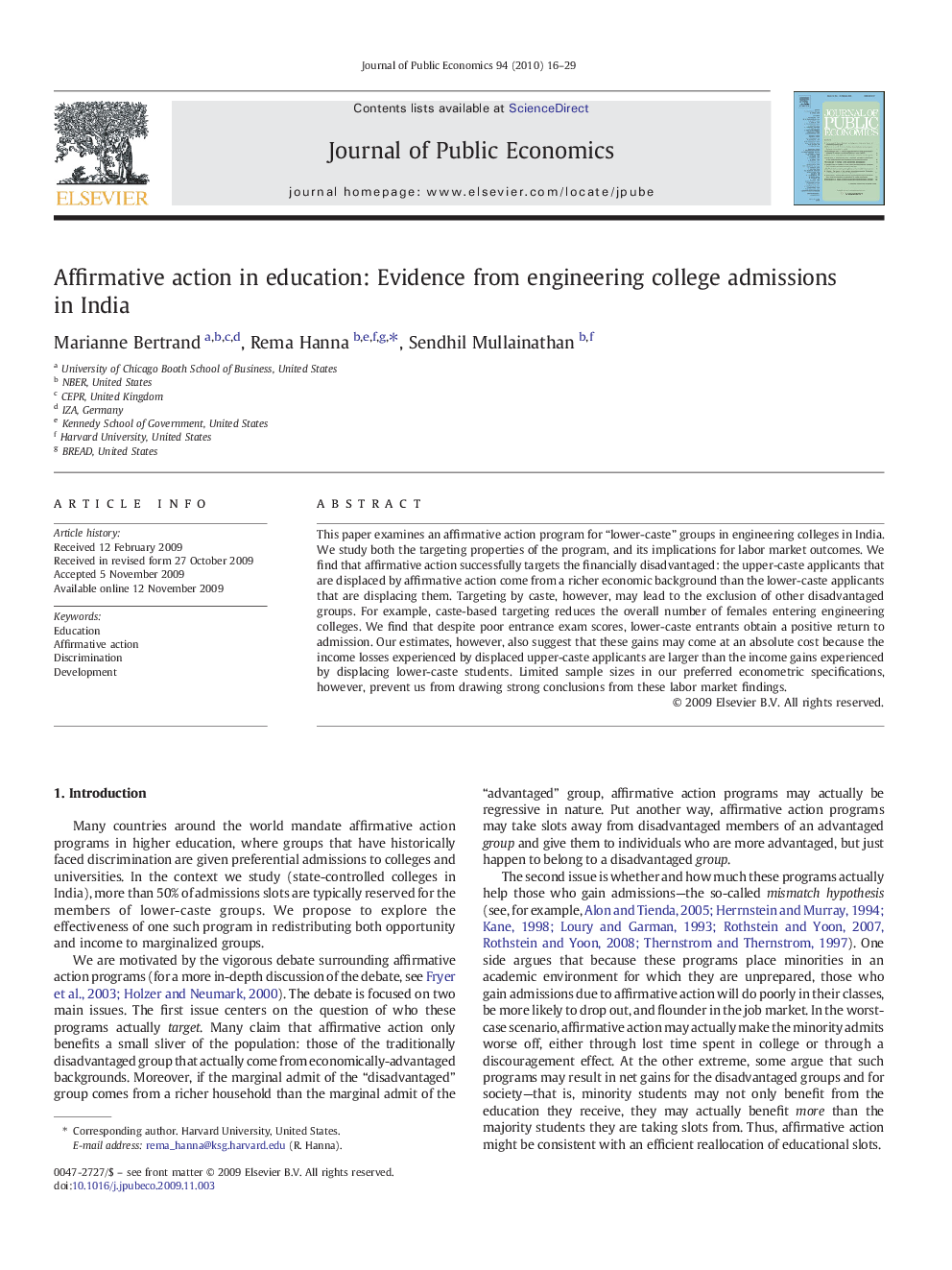| Article ID | Journal | Published Year | Pages | File Type |
|---|---|---|---|---|
| 970052 | Journal of Public Economics | 2010 | 14 Pages |
This paper examines an affirmative action program for “lower-caste” groups in engineering colleges in India. We study both the targeting properties of the program, and its implications for labor market outcomes. We find that affirmative action successfully targets the financially disadvantaged: the upper-caste applicants that are displaced by affirmative action come from a richer economic background than the lower-caste applicants that are displacing them. Targeting by caste, however, may lead to the exclusion of other disadvantaged groups. For example, caste-based targeting reduces the overall number of females entering engineering colleges. We find that despite poor entrance exam scores, lower-caste entrants obtain a positive return to admission. Our estimates, however, also suggest that these gains may come at an absolute cost because the income losses experienced by displaced upper-caste applicants are larger than the income gains experienced by displacing lower-caste students. Limited sample sizes in our preferred econometric specifications, however, prevent us from drawing strong conclusions from these labor market findings.
